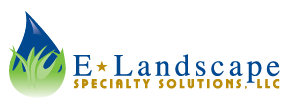LEED and What It Means to the Landscape Industry
 Originally developed in 2,000, the U.S. Green Building Council‘s Leadership in Energy and Environmental Design (LEED) certification process is intended to promote green building design, construction, operation and maintenance. Since its introduction, the LEED system has had a major influence, with LEED-certified and registered projects increasing as much as 700% per year (according to GreenBiz.com’s “State of Green Business 2008”)
Originally developed in 2,000, the U.S. Green Building Council‘s Leadership in Energy and Environmental Design (LEED) certification process is intended to promote green building design, construction, operation and maintenance. Since its introduction, the LEED system has had a major influence, with LEED-certified and registered projects increasing as much as 700% per year (according to GreenBiz.com’s “State of Green Business 2008”)
The LEED certification system is not simply aimed at influencing architects and builders. It has substantial implications for the landscape architecture and contracting industries as well.
Landscape Contractor Facilities
LEED principles can be applied both to the projects on which landscape professionals work as well as the facilities in which our businesses are housed. By “greening” our workspaces, we can use less energy and water, have lower greenhouse gas emissions, and provide a healthier work environment than conventional buildings. Here at E-Landscape, we have not yet begun to pursue LEED certification, but we have introduced a Sustainability Policy and are taking steps to make ourselves greener.
Service Offerings
LEED-seeking projects can earn points for water-efficient landscaping, green roofs and other landscape-related components. Because landscape design and maintenance are factored into the scoring system used for LEED certification, there are opportunities or landscape designers and contractors to position themselves as LEED experts. “Landscape professionals can play an important role in green building as sustainable landscaping techniques are an important aspect of achieving LEED certification,” says Ashley Katz, a USGBC spokeswoman. There are also opportunities on the maintenance side. One of the fastest-growing LEED categories is Existing Buildings (EB), and landscape contractors have an opportunity to help property managers transition their landscapes to LEED-EB standards through irrigation, drainage and water containment upgrades, mulching projects and more.
Landscape Design
In addition to the LEED certification guidelines promulgated by the U.S. Green Building Council, the American Society of Landscape Architects – in conjunction with the Lady Bird Johnson Wildflower Center and the United States Botanical Garden – has launched the Sustainable Sites Initiative to provide further guidance on how landscape design can promote sustainability. The Initiative has developed a rating system that can be applied to landscapes regardless of whether they include a building (whereas the USGBC LEED standards apply to buildings only). The system rewards practices such as stormwater management, the use of native plants, acquiring plants from local growers, selecting durable materials and supporting social interaction through landscape. USGBC has agreed to incorporate the lessons learned from the Sustainable Sites Initiative into future versions of the LEED rating system.
The LEED scoring system is still evolving, but one thing is very clear – the “green” movement is here to stay and landscape contractors that understand LEED practices will be well positioned to contribute to projects with a sustainability component. To learn more about the work E-Landscape has done on LEED-certified and LEED-seeking projects, visit the Sustainability page of our website.



